Orchid Nurseries Reveal The 6 Key Factors For Reblooming

HOUSEPLANTS > ORCHIDS > REBLOOMING
Reviewed By PETER LICKORISH

Peter is a Horticulture Lecturer and self-employed Horticulturist, with a passion for diverse areas of the industry - from garden design to the science behind plant growth and propagation. He has completed the Royal Horticultural Society’s Master of Horticulture (MHort) Award and lectures on RHS courses at Bedford College.
Contributions From MARK RILEY

Mark is the Technical Manager at Love Orchids, having had 35 years of experience in ornamental plant production, including 15 years growing Phalaenopsis orchids. He works at Love Orchid’s site in the New Forest.

Daniel is the owner of The Dark Orchid, a specialist orchid seller that ships exotic and rare orchid varieties throughout the UK. Some of the orchids for sale can be found on his Instagram page, where he shares photos of some stunning varieties.

With several published books on the topic of orchids, Sara is the owner of Burnham Nurseries Ltd, one of the UK’s leading orchid sellers that first opened over 70 years ago. Sara has worked for the nursery for 32 years, during which time she has won various awards, most recently winning a Gold Medal at the RHS Wisley Orchid Show in 2022.
IN THIS GUIDE
ORCHID GUIDES
Orchids have won a reputation as ravishing flowering plants that put on a one-time extravaganza and then fail to rebloom.
Well, I’m here to tell you that this bad rap is ill-deserved.
The reason for failing to re-bloom is simple: these demanding plants have very particular needs and requirements, and if these go unmet, they will not rebloom.
Very many factors come into play and it is the combination of these factors that influence reblooming.
“The key to encouraging orchids to bloom is to focus on the fundamentals of their care,” says Daniel Toor, Owner of the specialist plant nursery The Dark Orchid.

“By providing the appropriate amount of light, maintaining consistent temperatures throughout the year, and ensuring proper watering and humidity levels, you can help your orchids reach their full potential.
“Often, part of the necessary environment can be naturally provided, making it easier to concentrate on meeting the other requirements. Simply put, following the basics of orchid care will help you achieve blooming success.”
Underneath I lay out the various factors that influence whether an orchid reblooms or not, ordered from most important to not-quite-as-important:
- The temperature difference in the day versus the night.
- An orchid’s optimal temperature range.
- Deadheading and pruning regimes.
- Your choice of genus.
- The sunlight levels.
- Other, less common, factors such as humidity.
1) Create A Temperature Difference
Just about all Orchid plants require a difference in daytime and nighttime temperatures to stimulate blooming.
This is the single most important factor for reblooming.
Nighttime temperatures need to be 5-10°C lower than daytime temperatures.
Be aware that a required nighttime low for one genus could cause orchid plants of some other genus to die.
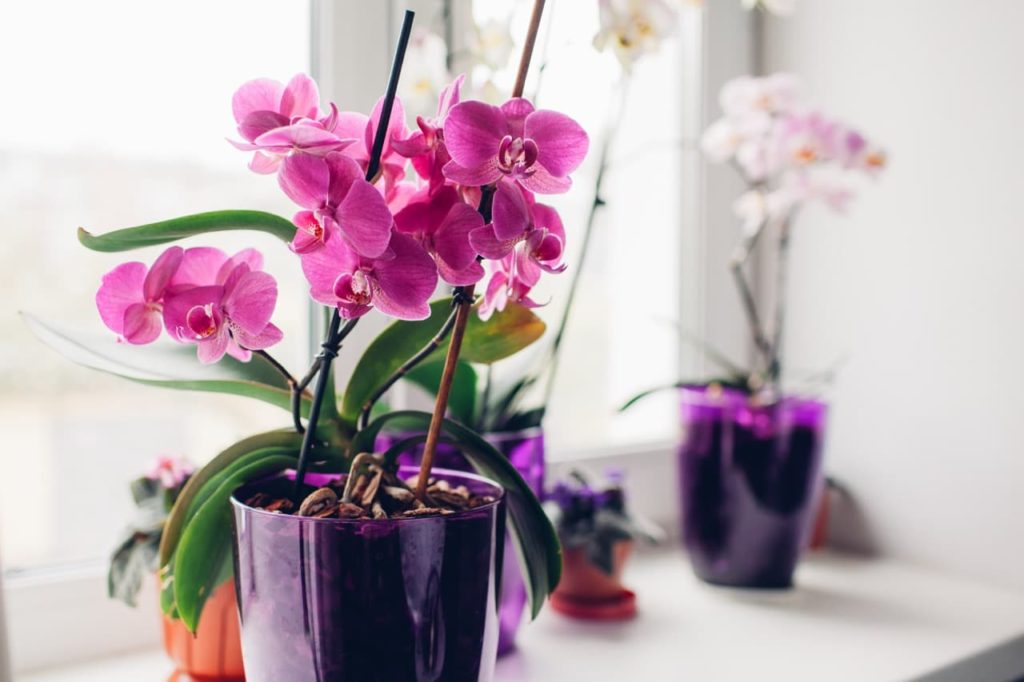
For specifics please see the following section.
Very broadly, daytime temperatures should remain between 21-27°C and nighttime temperatures between 14-20°C.
Such temperature differences between day and night are not exactly easy for the hobbyist gardener to regulate.
The most straightforward and trouble-free way to achieve the objective is to keep your orchids in a particular room where you can install a programmable thermostat.
2) Maintain Temperature Within A Set Range
“The correct temperature range for the type of orchid will help your orchid to rebloom, as some cooler varieties will not flower if kept too warm,” shares Sara Rittershausen, the Owner of Burnham Nurseries.
Orchids are divided into three categories depending on the optimal temperature range in which they will re-bloom: warm-growing, intermediate, and cool-growing.
Warm-growing orchids need temperatures between 19-29°C during the day and 16-18°C during nighttime.
These include Phalaenopsis orchids, most Paphiopedilums and most Vanda varieties.
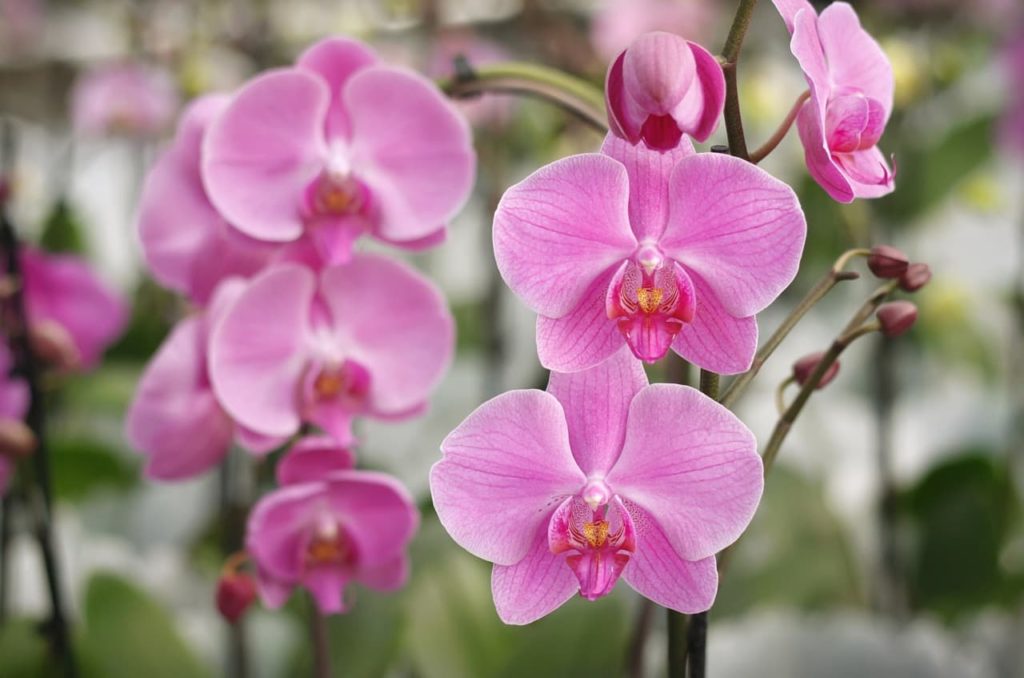
Intermediate-temperature orchids do best in temperatures typically between 21-25°C during the day and 13-15°C during the night.
These types include Cattleya, Odontoglossum, some Miltonias, some Paphiopedilums and Brassavola.
Cool-growing orchids are most comfortable in daytime temperatures of about 20°C through the day and only 10°C by night.
The genera include Cymbidium, Dendrobium, Oncidium and most Miltonias.
“Some species, such as Dendrobium lindleyi, need late autumn and early winter temperatures at the bottom of their range, with warmer temperatures to follow.
This cooler, dry winter rest triggers flowering.
3) A Deadheading & Pruning Regimen
Deadheading and pruning have significant impacts on re-blooming, for better and for worse, depending on what you do and to which orchid genus.
This matter is perhaps the least straightforward and more of a judgement call for Phalaenopsis orchids and this is because, unlike all other orchid types, it may well rebloom from the same spike, even in the following season.
In contrast, pruning is straightforward for Cymbidium.
When you deadhead Phalaenopsis, you have a choice.
Allow the flowers to fade and, when a faded flower can be twisted off, do so.
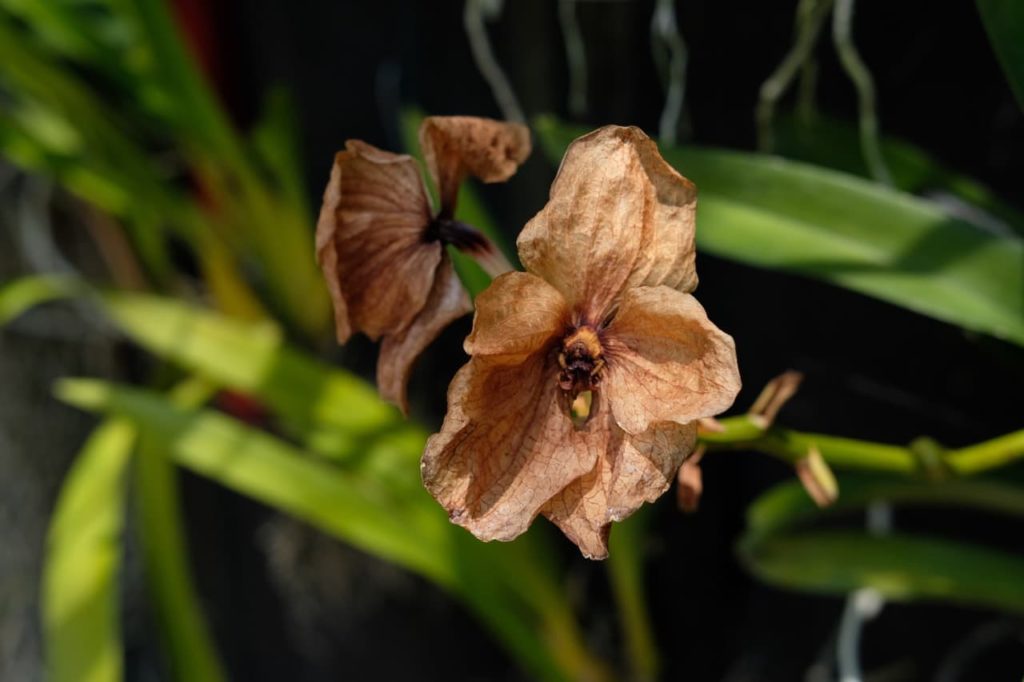
Leaving behind the whole stalk in this way may result in fresh buds near the tip.
Alternatively, trim the spike to just above the first node below the lowermost flower on the spike or to just above the second node from the base of the spike.
This type of trimming may stimulate a branch from the trimmed spike.
After the growing season has ended, if the spike has yellowed, it should be pruned, but if the spike has stayed green, it may bloom the following year, so there’s another judgement call!
Paphiopedilum orchids ought to be deadheaded during the flowering season.
After a flower has faded, cut its stalk a very small distance away from the spike, making sure that you do not injure the spike.
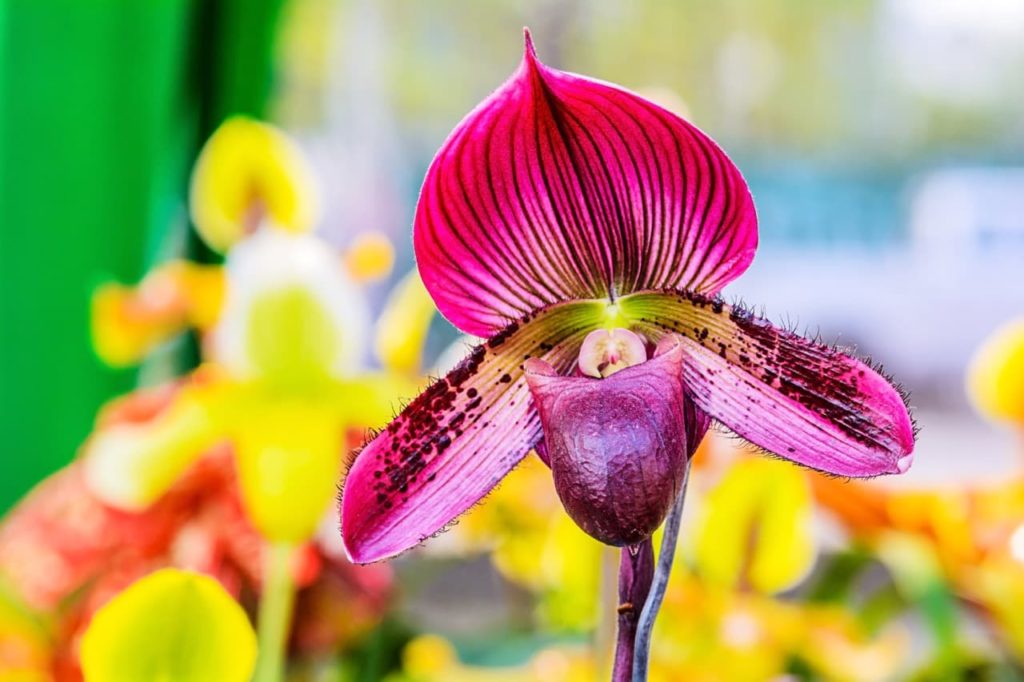
Dendrobium orchid flowers may be deadheaded as they fade or you can wait until all of them on a spike are spent at which point the spike may be trimmed, but not from the base.
Trim the spike some distance above the bulge, unless it has yellowed and shrivelled in which case you should prune the spike from the base.
For Cymbidium and other types of orchids, prune the spike from the base after the plant has gone dormant.
It may be hard to do so, but if you use mini-secateurs and use the bottom blade with which to hook the spike from the middle and slide the secateurs down the spike, you’ll get a clean cut from near the base.
Whichever pruning implement you use, the blades should be sharp.
4) Choose The Right Orchid
Some genera just bloom and re-bloom more readily than others, while others are known to be quite fussy.
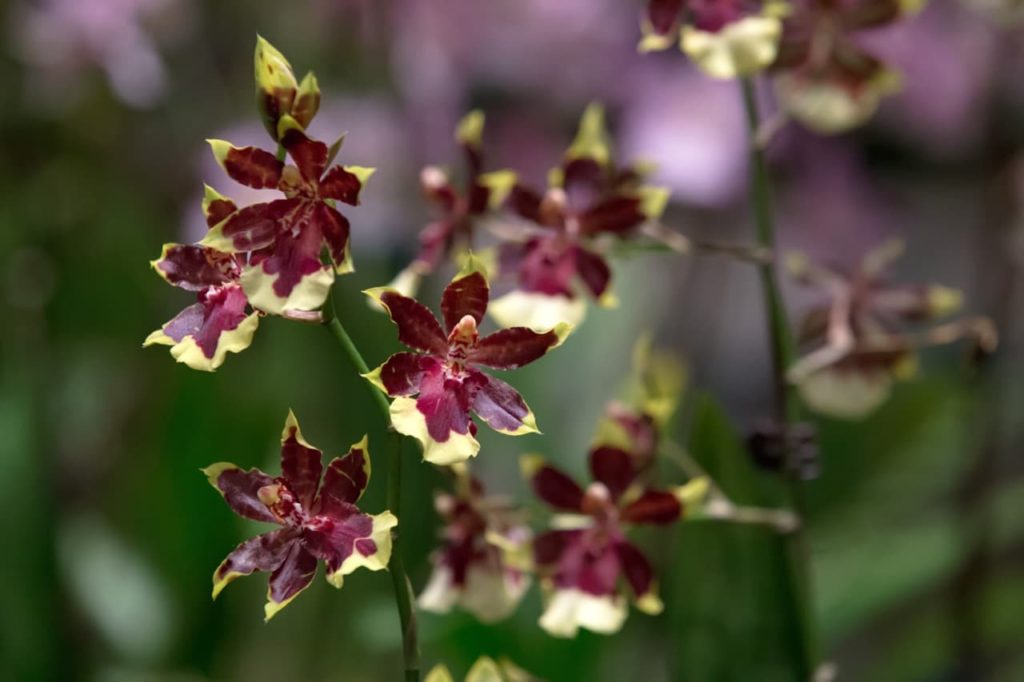
Oncostele, Phalaenopsis and Paphiopedilum orchids are all good at reblooming.
Of course, there are other orchids that can rebloom, but the types identified here are the ones that will most reliably bloom again and again.
5) Find The Correct Sunlight Levels
Information and opinions as to orchids’ light needs can be very conflicting and contradictory.
One reason for this is that in different geographical regions, the strength and intensity of sunlight vary.
A second reason is that, just as orchids are divided into three groups by temperature, they are divided into three groups by light needs, low-light, medium-light and high-light, and even this rule is somewhat generalisation.
This considerable variance in light preferences is a natural outcome of the various native habitats of these plants, which range from open prairies and grasslands to low-light forests and bogs.
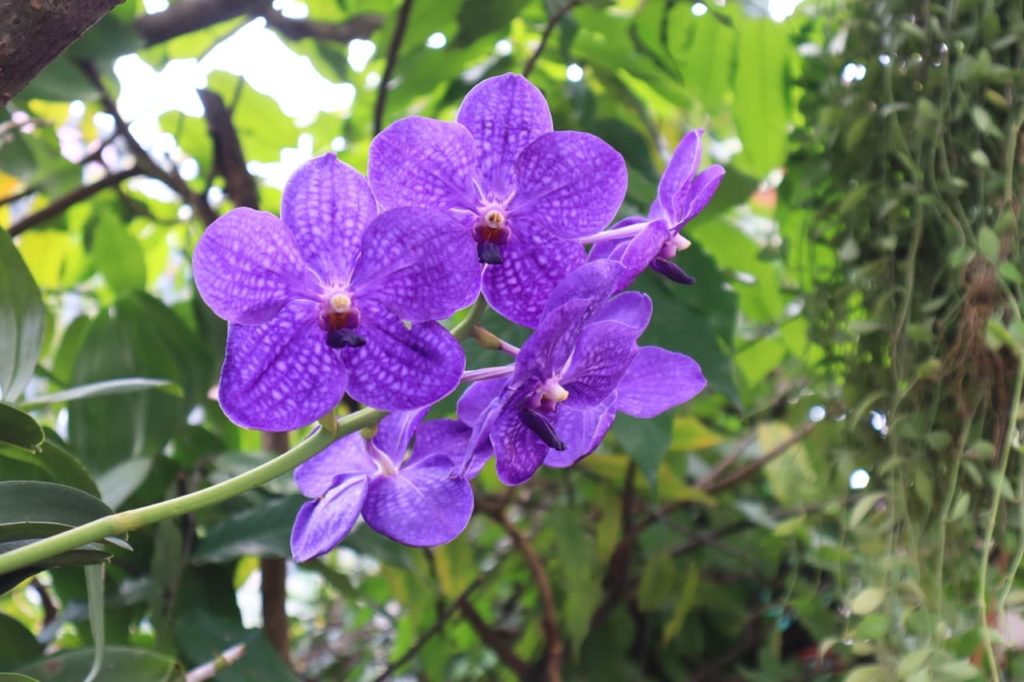
Vanda, Brassavola, and Oncidium orchids all love 6-8 hours of direct sunlight every day, as do Cymbidium, Dendrobium, most Cattleya and some Epidendrum.
Meeting these daylight requirements is especially important for most species in winter; this is when many species initiate their flower buds.
During summer, however, avoid too much direct sun in the middle of the day for genera like Dendrobium – opting for a west-facing windowsill could be a good option.
As for orchids with lower light preferences, 4-6 hours of sunlight is favoured by most Miltonias, whilst Paphiopedilum and Ludisia types prefer 2-4 hours a day.
With these orchids, the light should also be less intense.
Phalaenopsis is difficult to classify because these orchids’ light needs vary by variety and by the type of light they receive.
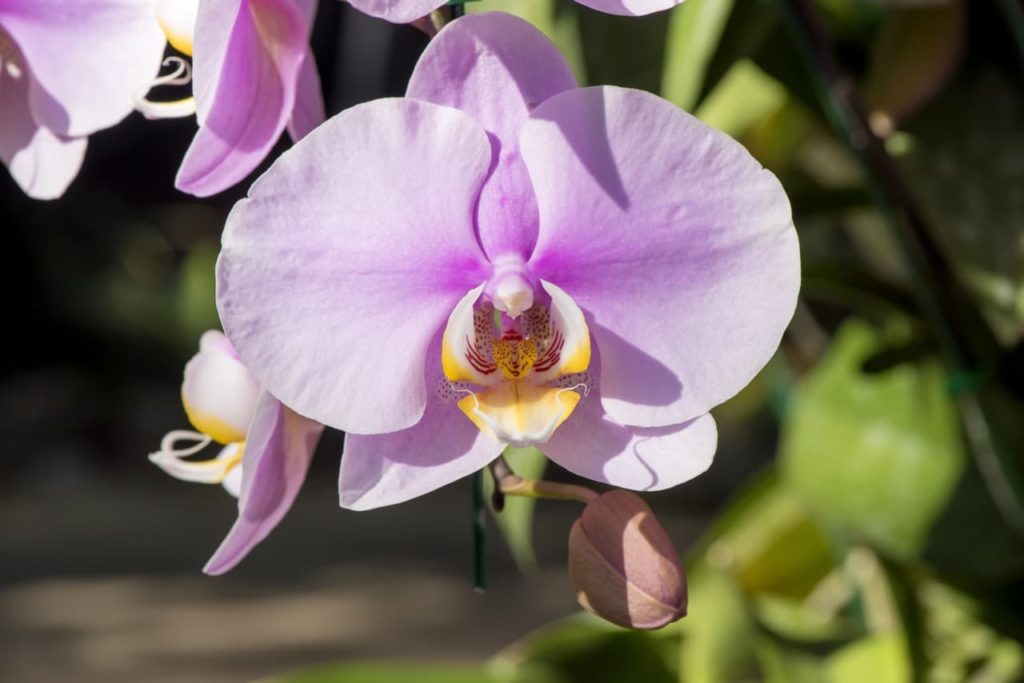
Depending on these variables, moth orchids may be placed in any of the three categories.
Some growers recommend shorter bursts of bright, indirect light, and others favour longer durations of less intense light.
The exposure should be east-facing, otherwise east-facing to south-facing.
In general, orchids should be placed in indirect sunlight that is dappled, filtered or diffused.
You can also place orchids under grow lights where intensities and durations are controllable.
“If your orchid is reluctant to re-flower, give it a holiday!” adds Mark Riley, the Technical Manager at Love Orchids.
“Moving your plant to a brighter, cooler position in the house could be just what it needs to encourage a new flowering response.”
6) Other Factors
Humidity and seasonal temperature variation also have an effect on whether an orchid reblooms.
All orchids will be comfortable with a humidity between 50-60%.
However, Paphiopedilum and Odontoglossum will be happiest with humidity nearer 70%.
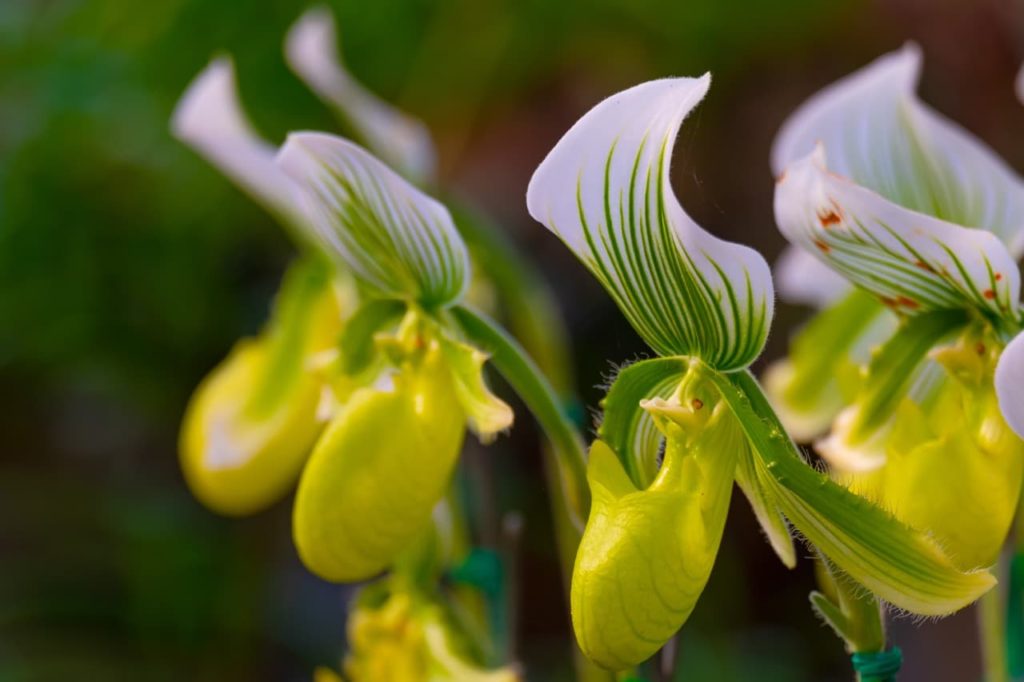
Orchid pots should be placed on orchid humidity trays; a humidifier is a very useful accessory if you grow orchids.
Orchid dormancy periods differ from genus to genus, but they are all dormant during the winter.
During dormancy, the day and night temperature levels should be kept about 5°C lower than the growing season levels.
“Orchids also need correct nutrition to flower well,” adds Peter Lickorish, a Master Horticulturist.
“Too much nitrogen later in the season and not enough potassium could hinder flowering, so check the N:P:K (Nitrogen:Phosphorus:Potassium) ratios in liquid feeds used.”

